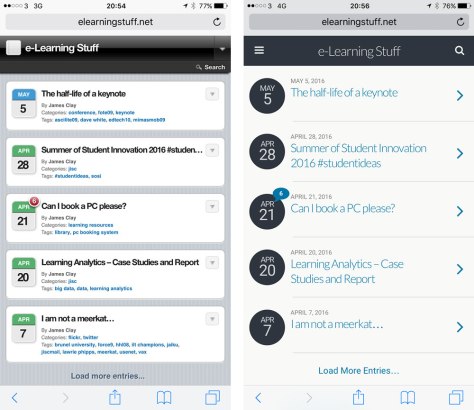
Back at the UCISA Spotlight on Digital Capabilities event at the end of May we had a discussion on the need for IT training teams.
A casual question to a sector wide mailing list recently about what IT training teams are called resulted in a number of replies of Lynda.com! It seems that a number of universities have done away with their IT training teams altogether, or reduced them to one or two, presumably very busy, individuals. In this session the panel will discuss this shift in institutional provision, consider the risks, and consider how training teams may need to evolve.
Delegates to the event were invited to submit questions in advance and I want to take this opportunity to expand my views and thoughts on the discussion and the questions, including some questions we never had time for.
One of the questions was how IT training teams show their value beyond the “happy sheet”. Showing your value by showing positive feedback from participants is all well and good if the strategic need for an IT training team is to ensure delegates provide positive feedback. I found the easiest way to do this was to forget the training and provide lunch or cake!
A real challenge for measuring value is understanding both the impact and the value of that impact. This can be difficult to record, measure and assess, hence the often fallback on the happy sheets!
One way in which you can demonstrate value is clearly link the training sessions to the strategic objectives of the organisation or department and explain how the training will support or contribute to the success of that objective.
A further question we were asked was how do we create protected spaces in our workload to support innovation? The issue of time arose well the issue of lack of time; and as you know if you ask me why I don’t have a dog, the reason is I don’t have the time. When people say they don’t have the time, or they need time; what they are actually saying and meaning is: this is not a priority for me, I have other priorities that take up my time.
If people are concerned about the issue of time when it comes to creating protected spaces in their workloads to support innovation, then they are probably more likely concerned about how this will fit into their other priorities. So ask the question, who is responsible for setting the priorities of the staff in your institution? Priorities in theory are set by the line manager, who is operationalising the strategic direction and vision of the institution. If digital is not a strategic priority can we be surprised that staff within that institution don’t consider it a personal priority. How do you make innovation a strategic priority? That’s another question that would take more than one blog post to answer.



















